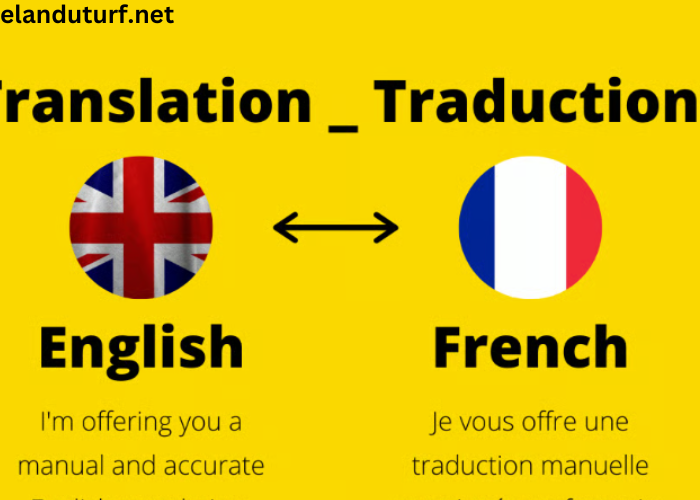In our increasingly interconnected world, translation services play a vital role in bridging communication gaps between different languages. Among the myriad of language pairs, translating English to French remains a critical skill, given the extensive use of both languages in global communication, business, and culture. This article delves into the intricacies of translating English to French, exploring the techniques, challenges, and best practices to achieve accurate and effective translations.
The Importance of English to French Translation
English and French are two of the most widely spoken languages globally, with English often serving as a lingua franca in international contexts and French being a prominent language in diplomacy, culture, and several regions worldwide. Translating between these two languages is essential for various reasons, including international business, legal documentation, academic research, and cultural exchange.
A successful English to French translation ensures that the intended message is conveyed accurately, preserving the nuances, tone, and context of the original text. This is crucial in maintaining clear communication and avoiding misunderstandings in diverse settings.
Understanding the Basics of English to French Translation
Translation involves more than just substituting words from one language to another. It requires a deep understanding of both languages’ grammar, syntax, idiomatic expressions, and cultural contexts. English and French, while sharing some similarities due to their Latin roots, also have significant differences that impact the translation process.
Grammar and Syntax: English and French have distinct grammatical structures. For instance, French nouns have genders, and adjectives must agree in gender and number with the nouns they modify. English, on the other hand, does not have gendered nouns. Additionally, the word order in French can differ from English, particularly in complex sentences. Translators must navigate these grammatical differences to ensure the translation flows naturally in French.
Idiomatic Expressions: Both languages have idiomatic expressions that do not translate directly. For example, the English phrase “kick the bucket” means “to die,” whereas the French equivalent is “casser sa pipe.” Translators must be adept at finding equivalent expressions in the target language that convey the same meaning and cultural connotations.
Cultural Context: Cultural nuances play a significant role in translation. What may be acceptable or common in one culture might not be in another. Understanding cultural references, social norms, and regional differences is essential for producing translations that resonate with the target audience. For instance, humor, slang, and colloquialisms often require careful adaptation to ensure they are appropriate and meaningful in the French context.
Techniques for Accurate Translation
To achieve high-quality translations, several techniques and strategies can be employed:
Contextual Understanding: Before translating, it is crucial to understand the context of the text. This includes the purpose of the translation, the target audience, and the subject matter. Contextual understanding helps in selecting the appropriate tone, style, and terminology.
Literal vs. Dynamic Translation: There are different approaches to translation, including literal (or word-for-word) translation and dynamic (or sense-for-sense) translation. Literal translation focuses on preserving the exact wording, while dynamic translation aims to convey the overall meaning and intent. The choice between these approaches depends on the nature of the text and its intended use.
Proofreading and Editing: After completing the initial translation, proofreading and editing are essential steps. This involves reviewing the translation for accuracy, consistency, and readability. Checking for grammatical errors, proper terminology, and overall coherence ensures that the final product meets high standards.
Use of Technology: Modern translation technology, such as translation software and tools, can assist in the translation process. Tools like translation memory systems and machine translation engines can improve efficiency and consistency. However, human expertise is crucial in refining and contextualizing the translation to ensure its quality.
Challenges in English to French Translation
Translating from English to French presents several challenges, each requiring specific strategies to address:
False Cognates: False cognates are words that look similar in both languages but have different meanings. For example, the English word “library” and the French word “librairie” might seem similar, but “librairie” actually means “bookstore” in French. Identifying and correctly translating these false cognates is essential to avoid confusion.
Complex Sentences: English sentences can sometimes be lengthy and complex, with multiple clauses. Translating such sentences into French requires careful rephrasing to maintain clarity and coherence. Breaking down complex sentences into simpler components can help in achieving a more accurate translation.
Cultural References and Humor: Translating cultural references, humor, and idiomatic expressions requires sensitivity to cultural differences. What might be funny or relevant in English may not translate effectively into French. Adapting these elements to suit the French audience while preserving the original intent is a key challenge.
Best Practices for Effective Translation
To ensure the best possible outcome in English to French translation, several best practices can be followed:
Research and Preparation: Conduct thorough research on the subject matter and familiarize yourself with relevant terminology. This preparation helps in producing a translation that is both accurate and contextually appropriate.
Consultation with Native Speakers: Collaborating with native French speakers can provide valuable insights and feedback. Native speakers can offer perspectives on idiomatic usage, cultural nuances, and stylistic preferences, enhancing the quality of the translation.
Continuous Learning: The field of translation is dynamic, with evolving language trends and practices. Engaging in continuous learning and professional development helps translators stay updated on new developments and improve their skills.
Client Communication: Clear communication with clients regarding their specific needs, preferences, and expectations is crucial. Understanding the client’s requirements and providing regular updates ensures that the translation meets their objectives.
The Role of Professional Translation Services
While individual translators play a crucial role, professional translation services offer additional benefits, particularly for complex or high-stakes projects. Translation agencies employ experienced translators who specialize in various fields, ensuring expertise and accuracy in translating technical, legal, medical, and other specialized texts.
Professional services also provide quality assurance through rigorous review processes, including proofreading, editing, and verification. This added layer of scrutiny enhances the reliability and precision of the translation.
Conclusion
Translating English to French is a multifaceted process that requires a deep understanding of both languages, cultural contexts, and translation techniques. By addressing the challenges, employing effective strategies, and following best practices, translators can achieve accurate and impactful translations.
Whether for business, legal, academic, or personal purposes, mastering the art of English to French translation opens doors to effective communication and cultural exchange. Embracing the complexities of this task and leveraging professional resources and tools contribute to producing high-quality translations that bridge linguistic and cultural gaps.




